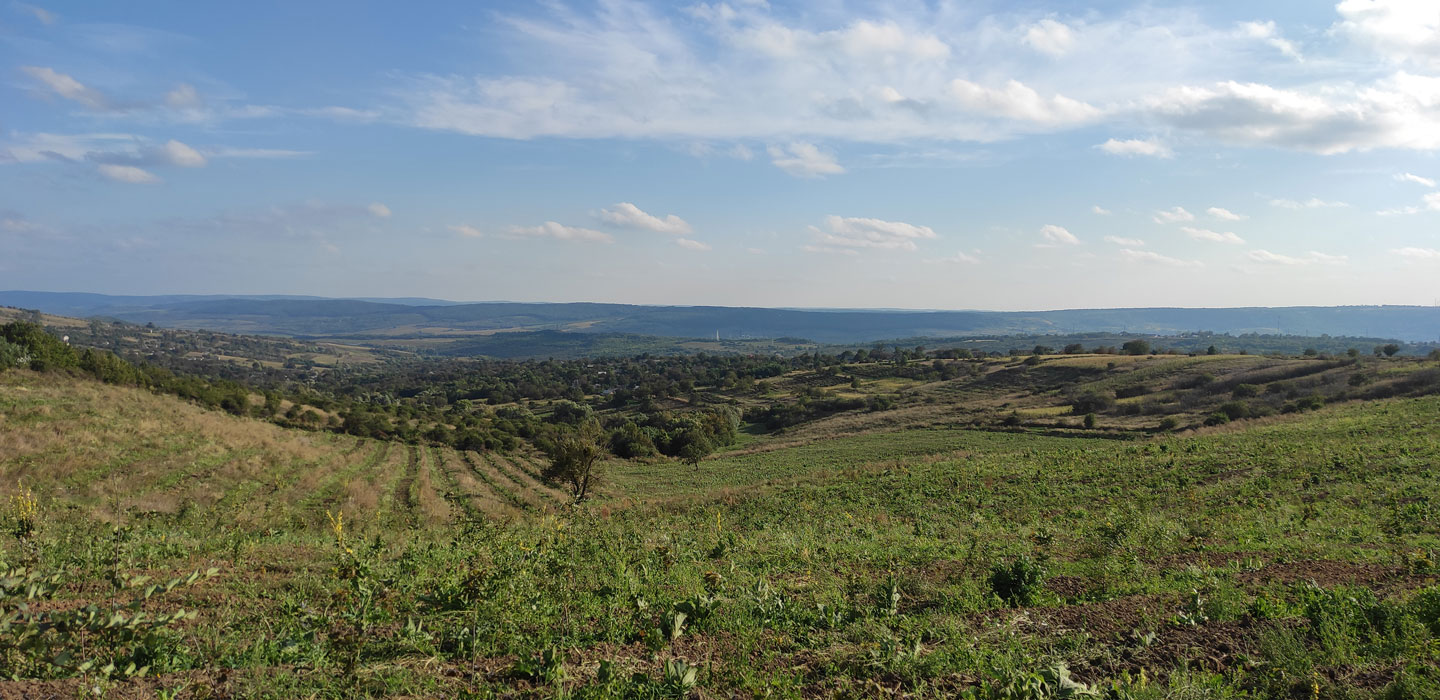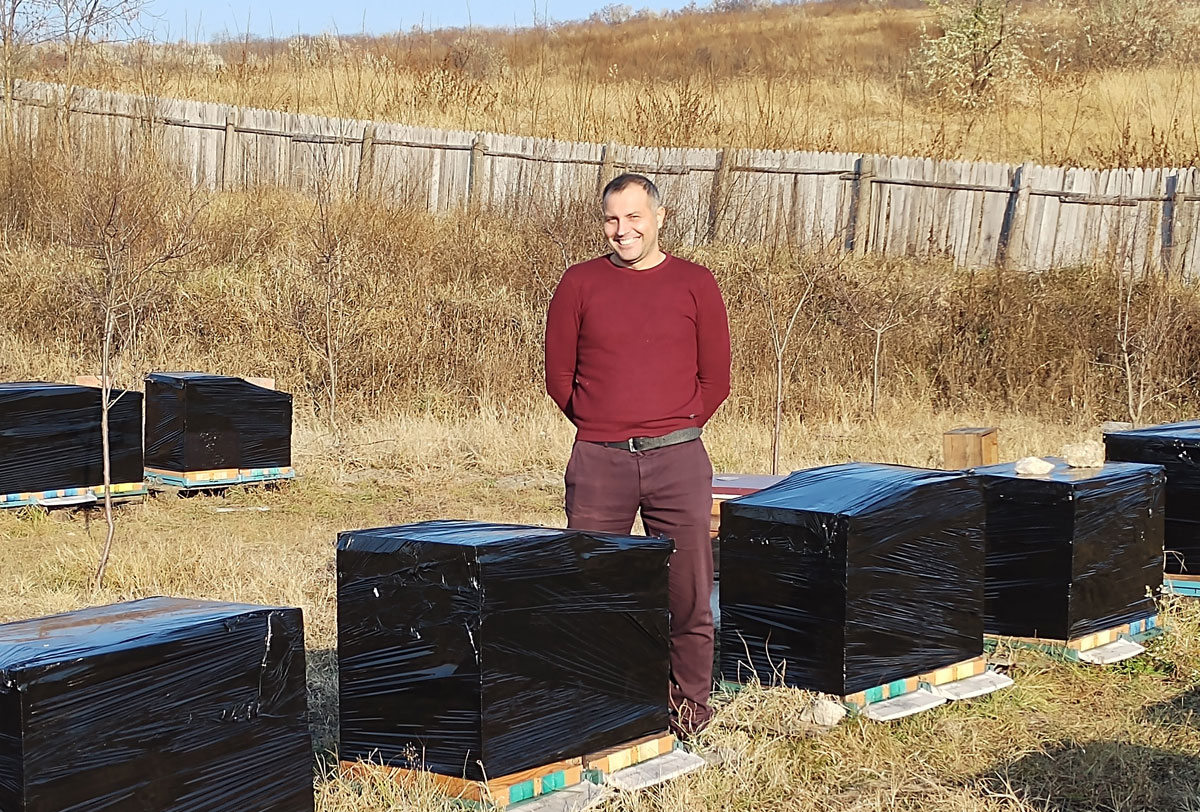In Moldova, shelter belt forests build rural livelihoods and protect against climate change impacts
IFAD Asset Request Portlet
Asset Publisher
In Moldova, shelter belt forests build rural livelihoods and protect against climate change impacts
Estimated reading time: 3 minutes
Mihail Bozianu’s interest in beekeeping started early. “I was 11 years old and we had nothing,” he remembers. “I started on my own with two hives. By the day I graduated from high school, I had 43.”
Today, Mihail, a resident of Mingir village, has 1,200 beehives. He’s one of the most productive beekeepers in Moldova, and has won international awards for beekeeping.
To do their best work and produce their finest “liquid gold,” Mihail’s bees depend on the tranquil forest environment they find on the slope of a nearby hillside, where they spend their days buzzing peacefully among the six hectares of trees and undergrowth. Astonishingly, this slope was once barren, frequently used as a rubbish dump and prone to landslides – but today, that’s a distant memory.
This dramatic change came about after Mihail received a grant from the IFAD-financed Rural Resilience Project (RRP), via IFAD’s flagship ASAP initiative, to plant a protective shelter belt.
Shelter belts are an agroforestry technique that turns degraded land into carefully managed forests of diverse native trees and plants. They reduce soil erosion, safeguard water resources, protect against storm damage, act as windbreaks, and even capture carbon – in short, they’re an ideal way to help rural communities adapt to climate change and its effects, including extreme weather events.
What’s more, a well-planned shelter belt helps increase rural incomes by creating the conditions for better agricultural yields in the surrounding fields, along with forest products like Mihail’s honey. The resulting boost to local economies fosters a sense of stability and creates economic opportunities that, among other effects, provide decent jobs for young people and give them another option besides leaving home in search of work.
Working with staff from ICAS, the research institute of Moldova’s forestry agency, Mihail chose trees that would flourish at different times of year: linden, mahaleb cherry, cornelian cherry and, most importantly, acacia – which grows fast and which bees love.
 |
| Mihail is pictured with some of his new beehives. The hill with the shelter belt can be seen behind him. |
His honey production is already increasing – to the point that he’s had to hire help. “Now I am paying a salary to a young man who is not afraid of bees,” Mihail says. “I am also supporting his studies so that he doesn’t have to leave the country to find work.” By the time the shelter belt is mature, he expects his honey production to rise by over 70 per cent. He’s also planning to hire and train four more apprentices.
Stories like Mihail’s are an inspiration for impoverished rural communities across Moldova that are confronting the effects of climate change and struggling to find ways to adapt.
Petru Sorici, the mayor of Nishcani village in central Moldova, is among them. “We noticed that villages that are surrounded by forests are somehow more protected from different kinds of weather: hail, landslides, heavy rains,” he says. He urged his fellow villagers to apply for adaptation funding from the IFAD-financed IRECR project.
In 2020, Nishcani village received approximately US$16,000 to plant and manage seven hectares of forests as a shelter belt just north of the village, on what had once been heavily degraded land next to a landfill.
Residents are already seeing some benefits from the shelter belt: like the one in Mingir village, it’s an ideal place for bees to thrive and it halts soil erosion. It’s also an ideal growing environment for medicinal plants, and it creates a natural barrier against the landfill site.
But trees grow slowly, and forests need to be safeguarded as they mature. In the areas where shelter belts have been established, local authorities have agreed to manage them for the first few years, until the trees are well established. This, along with training on climate-resilient agriculture for small-scale farmers, will keep the initiative sustainable even after the projects that supported them come to an end.
At the time of IRECR’s official closure in 2021, it had produced 42 forest restoration plans and established over 500 hectares of protective shelter belts and strips of pasture, on land owned by 2,000 households. The RRP project, which is still ongoing, is providing grants to small-scale farmers to establish another 200 hectares of shelter belts.
As climate change accelerates worldwide, conserving ecosystems and using natural resources sustainably will be critical for protecting the lives and livelihoods of rural-dwellers. For rural communities in Moldova, shelter belts are a small but important contribution to their resilience.
Learn more about IFAD’s work in Moldova.
Publication date: 18 March 2022